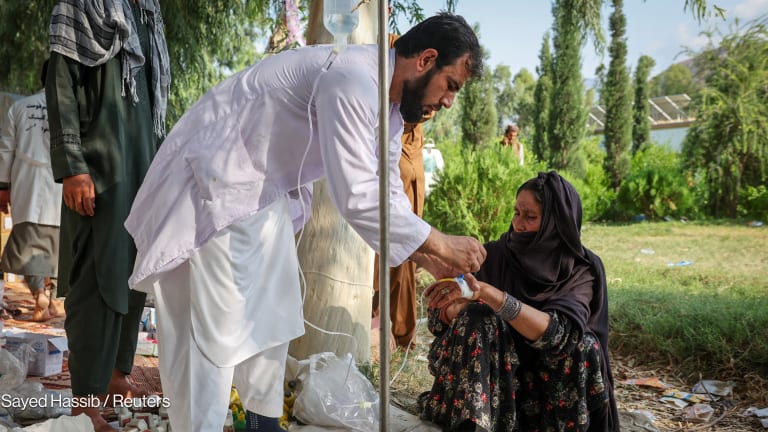
On Feb. 24, the day that Russian forces invaded Ukraine, the U.S. Agency for International Development deployed a disaster assistance response team to coordinate the U.S. government’s humanitarian response to the crisis. The DART, a 25-person unit of disaster response specialists, is now based in Rzeszów, Poland, roughly 60 miles from Ukraine’s western border.
USAID does not currently have any of its own employees inside Ukraine. Rather, it funds and supports organizations that have the capacity to rapidly scale up humanitarian response, according to a USAID official who spoke to Devex on the condition of anonymity, citing the agency’s media policy.
The official said that before Russia began massing troops on Ukraine’s border, there was a broad shift away from emergency humanitarian programs, which were previously limited to conflict lines in the eastern part of the country. Russia’s invasion prompted agencies supporting Ukraine to reverse course, as they scrambled to expand humanitarian response systems to the rest of the country. For USAID, that has meant channeling much of the U.S. government’s humanitarian assistance through United Nations agencies and international organizations.
“What we're looking to do is basically fund and work through partners who can scale to meet the needs of this large response but also have access and local networks,” the official said.
The question of access is a critical factor, and it varies widely across the country, the official said. In western parts of Ukraine, the official said, access is “stable and improving,” with international organizations reestablishing offices and able to provide assistance.
In the east, and particularly in areas closer to the lines of conflict, humanitarian access is “deteriorating and very tenuous at best,” the official said. Without pauses in the fighting or cease-fires, many areas have remained “nonpermissive.”
USAID has contributed more than $3 billion in assistance to Ukraine since 1992, and the agency’s recent efforts in the country have focused specifically on countering Russian aggression, anti-corruption, and the promotion of “core European values.” Reports that Russia has compiled a “kill list” that includes civil society activists and journalists, among others, underscore that USAID’s Ukrainian partners in those efforts could be under threat.
USAID has instructed its implementing partners in the country to remove personally identifiable information from the internet and social media, according to a Feb. 25 email that Devex obtained.
Asked whether USAID’s humanitarian response in Ukraine included any specific plan to protect people who might be targeted because of their involvement in U.S.-supported programs, the official said that “the safety of vulnerable individuals is a part of the humanitarian response” but referred questions about people affiliated with USAID programs to the agency’s country mission.
“I will say it's incredibly difficult right now, just given the kinetic environment and the fluidity of the environment, for protection actors to really fully enable their programs,” the official said.
Russia’s invasion of Ukraine has sparked fears of a food security crisis with international implications. Both Russia and Ukraine are major exporters of commodities such as wheat, barley, and sunflower oil. Together, they account for over 50% of the cereals imported by North Africa and the Middle East.
The official said that USAID’s Bureau for Humanitarian Assistance is working with other parts of the agency to mitigate the international fallout of lost food production but that relief efforts inside Ukraine are currently focused on acute lifesaving assistance.
“In terms of safeguarding food production or capacity to produce inside Ukraine, that specifically isn't something that we're able to look at right now as we're focused on more basic needs, but it may be something that we look to do going forward,” the official said.
If parts of the country are able to continue agricultural production and reinstate trade, the official added, USAID will likely incorporate local procurement of available goods into its assistance strategy.
Update, March 14, 2022: This article has been updated to reflect an increase in the size of USAID’s disaster assistance response team to 25 people.








